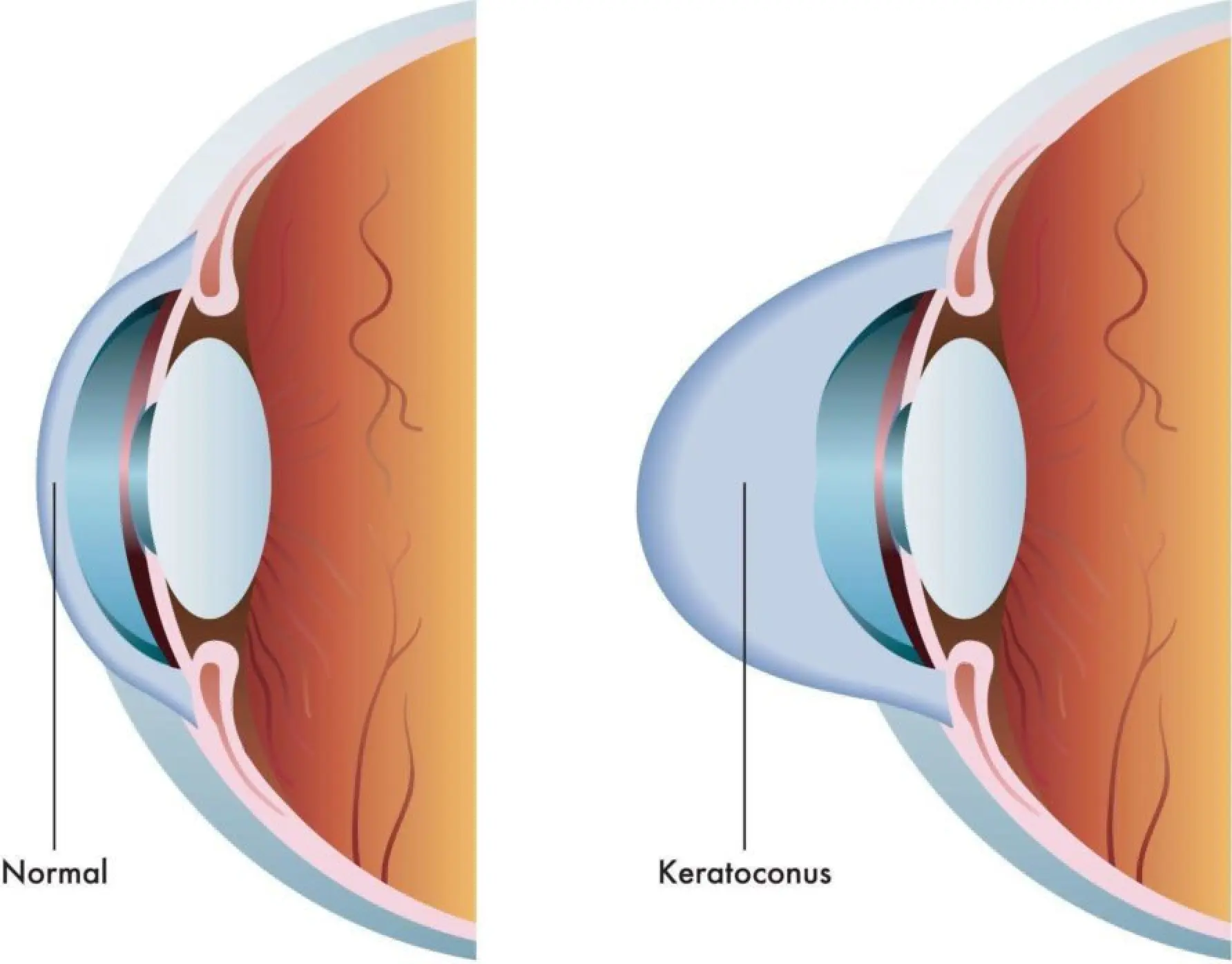Understanding keratoconus
Keratoconus, or KC, is a sight-threatening, progressive eye disease in which the cornea weakens and thins over time. This causes the development of a cone-like bulge of the cornea, which may lead to blurry or distorted vision.

Watch WiseEyes – All about keratoconus
Learn about keratoconus, which usually first appears in people in their teens or early twenties, but can affect older adults too.
KC is not a widely known condition
A recent survey found that only 22% of those with KC had ever heard of the disease prior to diagnosis, while only 40% of caregivers had heard of it. In some cases, caregivers were aware of other family members who had keratoconus.*
*Glaukos data on file

The connection between
eye-rubbing and KC
While it may seem like a common habit, don’t assume it’s harmless. Even if it’s eye rubbing because of allergies, this could be a sign that you have keratoconus, and it can also cause KC to worsen.
Additional signs and symptoms of KC can include:
Mildly blurred vision
Frequent headaches
Frequent prescription changes
A family history of KC
Vision that cannot be fully corrected with glasses or contact lenses
Difficulty seeing at night
Without treatment, these symptoms of KC can worsen over time

Common KC risk factors
Can genetics be a cause of KC?
While more research is necessary to determine the exact cause of KC, there is a genetic component associated with this disease. People with a parent, sibling, or child who has keratoconus have 15 to 67 times higher risk of developing corneal ectasia (thinning or weakening of the cornea) compared to people with no affected relatives.1
Are you at risk for KC?
The exact cause of KC is unknown, but genetics, the environment, and the endocrine system (which includes hormonal changes) could play a role in the development of KC.1-3
This disease affects both men and women. Studies show higher incidence rates among African American, Asian, Hispanic, and Middle Eastern populations.
KC in Down syndrome
People with Down syndrome are at a particularly high risk, with an estimated 5% to 30% of the population affected by KC.4,5 If you or someone you love has Down syndrome, consider scheduling a screening for KC.

Watch WiseEyes – Causes of keratoconus & who’s affected
Learn who’s affected by keratoconus as well as some of the factors that play a role in the development of KC, including genetics, the environment, and eye-rubbing.
Simulation of keratoconus patient vision. Creative Commons Attribution- NonCommercial-NoDerivatives 4.0 International License. Changes have been made to the original image. 2014 FIFA World Cup, Arena Corinthians, Sao Paulo. Photo by Marcello Casal Jr/ABr (CC BY-NC-ND 4.0)
See the difference?
Hand-eye coordination is just one of the vision skills required for sports. People with KC may find it difficult to track the ball when playing sports.
Drag slider in either direction to simulate the vision of someone with keratoconus.
REFERENCES
- Wang Y, Rabinowitz YS, Rotter JI, Yang H. Genetic epidemiological study of keratoconus: evidence for major gene determination. Am J Med Genet. 2000;93(5):403-409.
- What causes keratoconus? National Keratoconus Foundation (NKCF). Accessed October 11, 2022. https://nkcf.org/about-keratoconus/what-causes-keratoconus
- Fecarotta CM, Huang WW. Pediatric genetic disease of the cornea. J Pediatr Genet. 2014;3(4):195-207.
- Alio JL, Vega-Estrada A, Sanz P, et al. Corneal morphologic characteristics in patients with Down syndrome. JAMA Ophthalmology. 2018;136(9):971-978.
- Kristianslund, O, Drolsum, L. Prevalence of keratoconus in persons with Down syndrome: a review. BMJ Open Ophthalmol. 2021;6(1):e000754.

